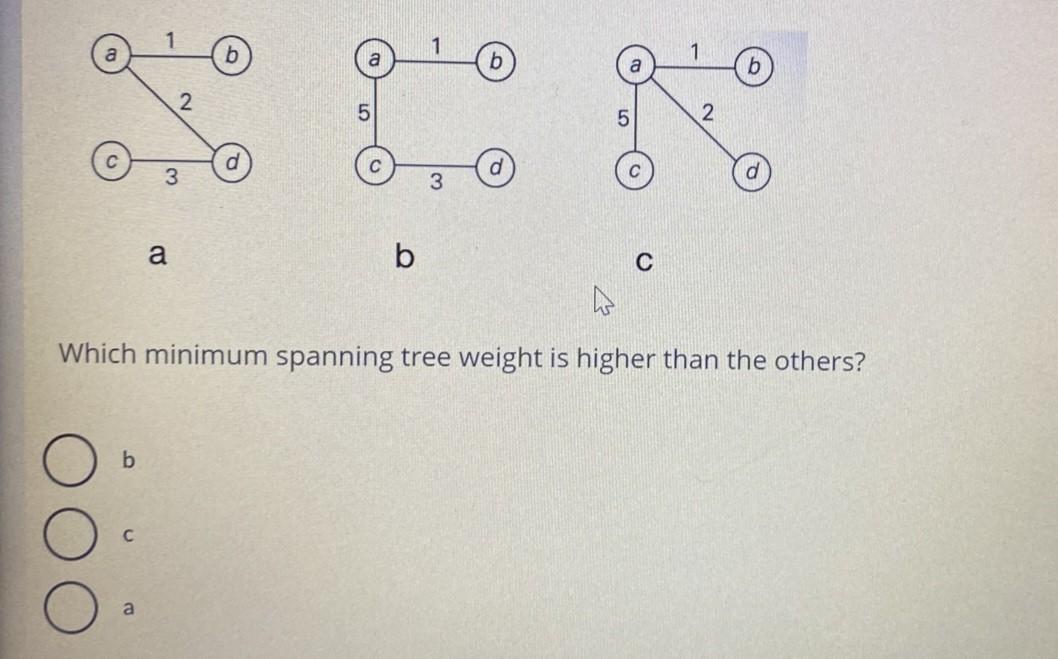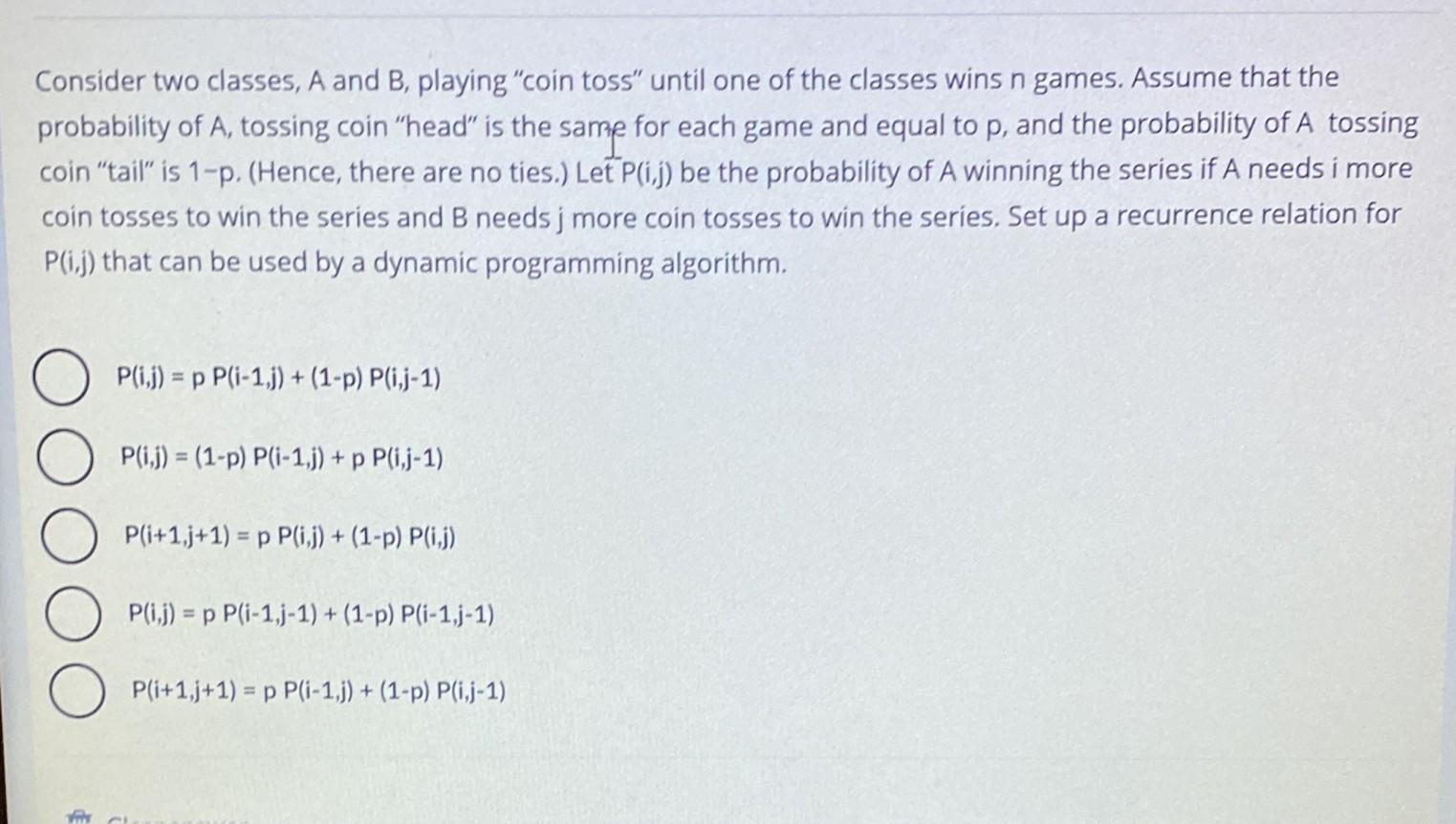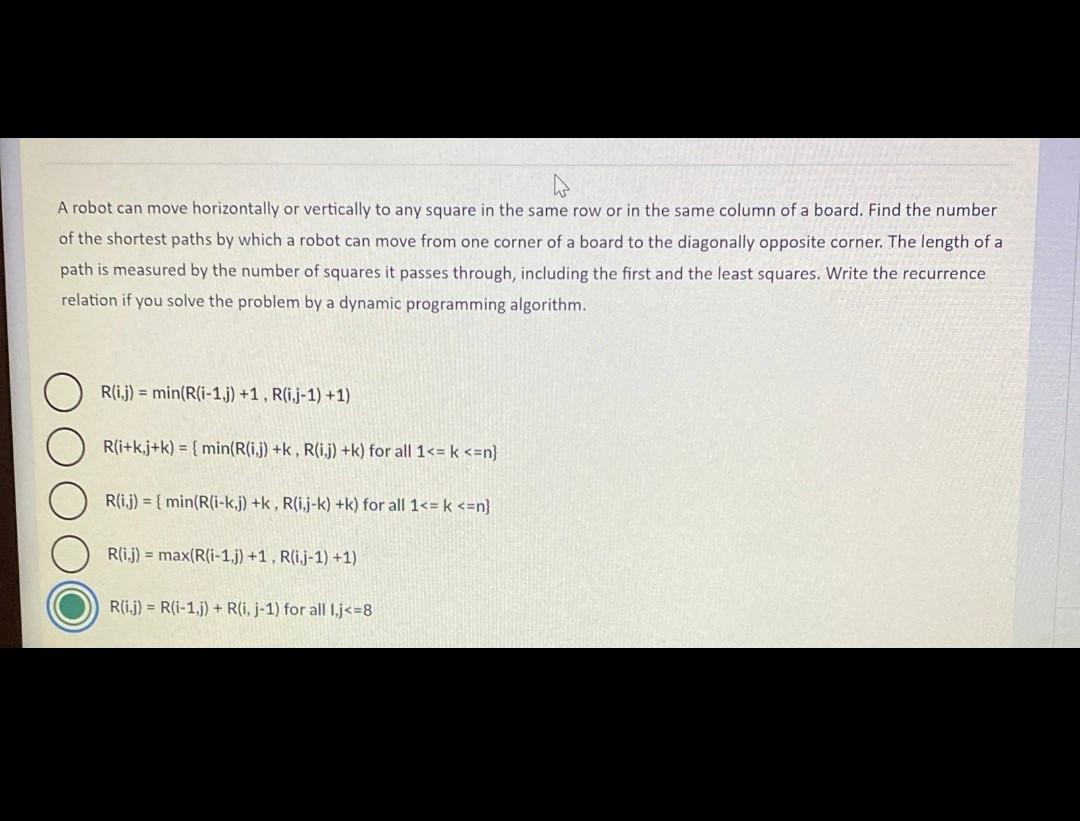Answered step by step
Verified Expert Solution
Question
1 Approved Answer
what's the answers? Which minimum spanning tree weight is higher than the others? b c a Choose the correct AVL tree using the information below.




what's the answers?
Which minimum spanning tree weight is higher than the others? b c a Choose the correct AVL tree using the information below. Insert in order: 05349215 Then delete 4 After that Insert 4 Consider two classes, A and B, playing "coin toss" until one of the classes wins n games. Assume that the probability of A, tossing coin "head" is the same for each game and equal to p, and the probability of A tossing coin "tail" is 1-p. (Hence, there are no ties.) Let P(i,j) be the probability of A winning the series if A needs i more coin tosses to win the series and B needs j more coin tosses to win the series. Set up a recurrence relation for P(i,j) that can be used by a dynamic programming algorithm. P(i,j)=pP(i1,j)+(1p)P(i,j1)P(i,j)=(1p)P(i1,j)+pP(i,j1)P(i+1,j+1)=pP(i,j)+(1p)P(i,j)P(i,j)=pP(i1,j1)+(1p)P(i1,j1)P(i+1,j+1)=pP(i1,j)+(1p)P(i,j1) A robot can move horizontally or vertically to any square in the same row or in the same column of a board. Find the number of the shortest paths by which a robot can move from one corner of a board to the diagonally opposite corner. The length of a path is measured by the number of squares it passes through, including the first and the least squares. Write the recurrence relation if you solve the problem by a dynamic programming algorithm. R(i,j)=min(R(i1,j)+1,R(i,j1)+1) R(i+k,j+k)={min(R(i,j)+k,R(i,j)+k) for all 1Step by Step Solution
There are 3 Steps involved in it
Step: 1

Get Instant Access to Expert-Tailored Solutions
See step-by-step solutions with expert insights and AI powered tools for academic success
Step: 2

Step: 3

Ace Your Homework with AI
Get the answers you need in no time with our AI-driven, step-by-step assistance
Get Started


